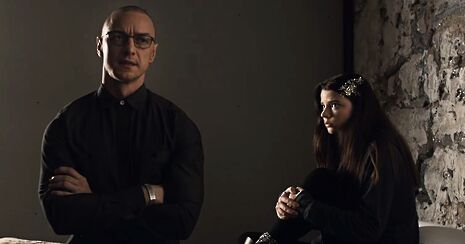Review: A decidedly un- ‘Split’ review
Billy Morgan bears witness to the Shyamalan-aissance in M. Night’s latest film

“He’s on the moooooooove”, James McAvoy whispers creepily in one of his many characters’ voices. One could say the very same (but probably without the creepy voice) about M. Night Shyamalan, the writer, director and co-producer of this intensely gripping film, Split, as he ploughs on with his recently revived career with yet another impressive offering.
Night (as I like to call him) has what many would label a somewhat ‘patchy record’ of works printed on celluloid thus far. That’s only really because of the few (but well-known and often-referred-to) missteps he’s made along the way. And it wouldn’t be unfair to refer to those missteps as stinkers (hello, Lady in the Water), but then one can’t take away that he has helmed some absolute gems, too. Remember the decade-defining The Sixth Sense, and the well-respected follow-ups The Village and Signs?
“James McAvoy makes the silver screen bubble, writhe and twist as he shape-shifts from one identity to the next”
What these better-regarded films possess in common is a combination of the intellectual and the heartfelt; and as they draw upon that old science fiction cliché of the third-act twist, they also manage to artfully pull together the loose threads of the human drama at play, suddenly revealing a beautiful tapestry of universal ideas and revelations about human relationships before our very eyes – as though they were there all along. Think of (spoiler) Mel Gibson’s character’s recollection of his wife’s final words at the end of Signs, and the subsequent realisation that her jumbled and confusing speech has even greater meaning than he initially thought. This realisation brings all the seemingly disparate portions of the film together for its beautiful, unifying, and therefore validating ending.
In Split, M. Night doesn’t abandon his now notorious signature twist-ending but instead chooses to use his obvious skills as a storyteller and a filmmaker to stretch it out, forcing us to question its effects as he lingers in moments of frustrating tension. Speaking of tension: James McAvoy makes the silver screen bubble, writhe and twist as he shape-shifts from one identity to the next, a result of the protagonist’s dissociative identity disorder (DID).
Is it fair to call McAvoy’s character the protagonist? Well, yes and no. And this is down to the fact that McAvoy’s character, while remaining present and vital throughout, is also rather difficult to identify with. Anya Taylor-Joy’s Casey, the film’s more traditional protagonist, is just as riveting as McAvoy’s – a fact made all the more impressive because of the range of roles McAvoy has at his disposal in comparison to Taylor-Joy’s mere one.
And, just as McAvoy metaphorically and literally climbs the walls, Taylor-Joy’s Casey faces her own interior demons on the ground, provided by some of the most uncomfortable but beautifully woven-in flashback scenes you’re likely to see this decade. In a packed cinema, amid the darkened silence, pained squeaks of “no” can be heard across the room as some rather upsetting scenes are boldly and beautifully played out to our horror.
There are pitfalls, nevertheless. Justifiably, within the mental health community, a degree of concern has been raised regarding yet another portrayal of a person with DID as dangerous. In the coming weeks, I hope to see M. Night and his cast dealing with the subject in interviews with the compassion, intelligence and nuance it deserves. And, though it might be considered a benefit to the discussion (raised awareness is one of the positives the mental health community, of which I consider myself a member, must take from Split), it is also frustratingly familiar to see yet another specific portrayal of someone suffering from DID hit the mainstream cinemas, thus perpetuating the stereotype.
With all this in mind, it’s good to see M. Night continuing his revival. One for all you psychological thriller-seeking types.
 Features / Should I stay or should I go? Cambridge students and alumni reflect on how their memories stay with them15 December 2025
Features / Should I stay or should I go? Cambridge students and alumni reflect on how their memories stay with them15 December 2025 News / Cambridge study finds students learn better with notes than AI13 December 2025
News / Cambridge study finds students learn better with notes than AI13 December 2025 News / Dons warn PM about Vet School closure16 December 2025
News / Dons warn PM about Vet School closure16 December 2025 Comment / The magic of an eight-week term15 December 2025
Comment / The magic of an eight-week term15 December 2025 News / News In Brief: Michaelmas marriages, monogamous mammals, and messaging manipulation15 December 2025
News / News In Brief: Michaelmas marriages, monogamous mammals, and messaging manipulation15 December 2025








